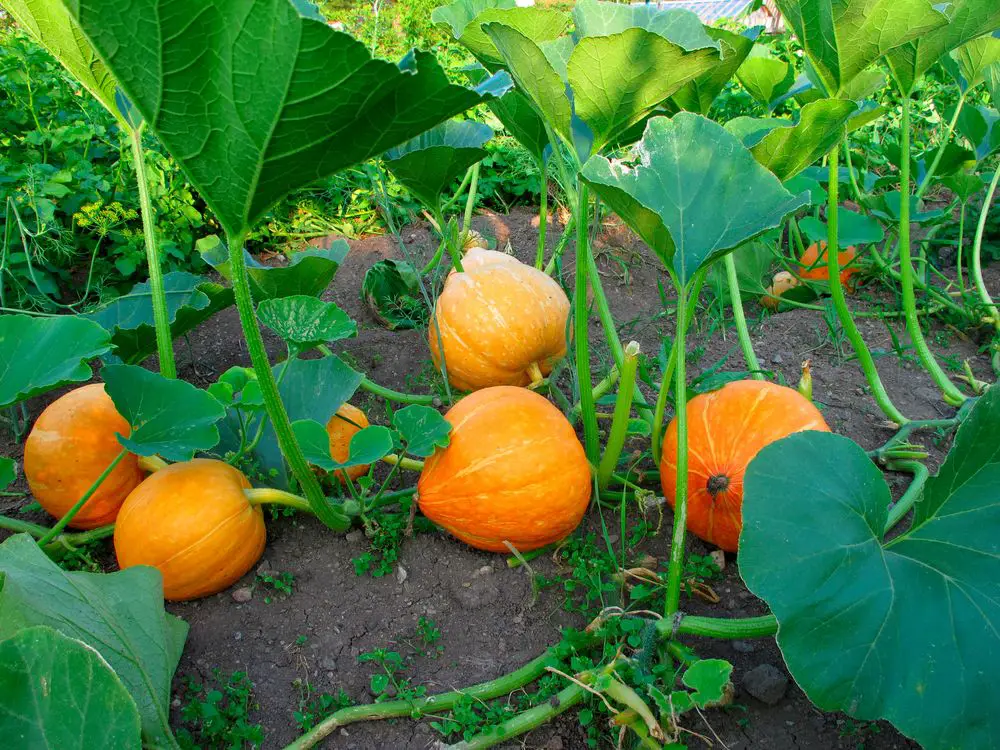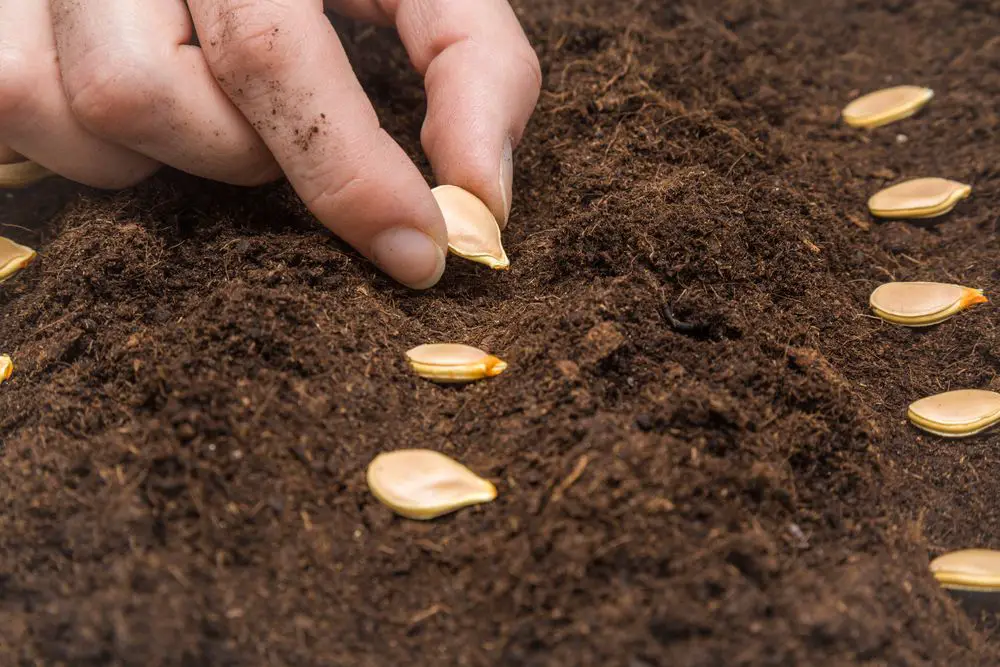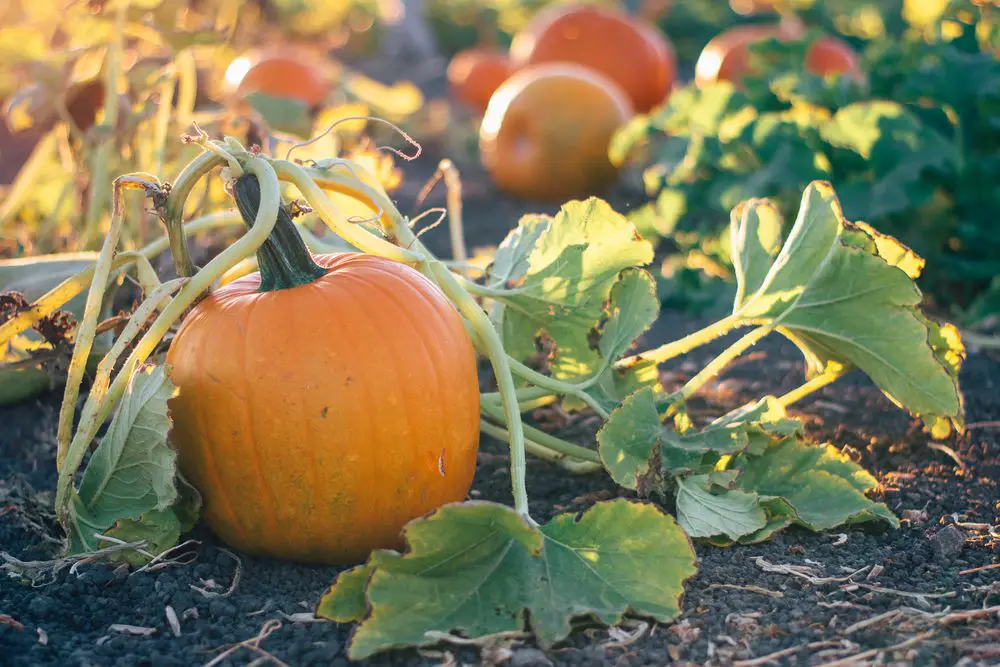Are you thinking of planting pumpkins in time for Halloween? Whether you will use pumpkins for cooking or carving (or both), knowing how to take care of the pumpkin vine is essential for a successful harvest.
The five expert tips are to train your pumpkin vines and prune them, expertly use insecticides, control your pumpkin vines and cover the severed ends for better protection.
Pumpkin Vine Care
All the nutrients you feed your pumpkin plant flow throw the pumpkin vine. You should, therefore, keep the vines healthy to ensure the smooth flow of nutrients to your plant.
Your pumpkin plant can grow to be large with several bright green leaves. You should, however, take good care of the pumpkin vine to ensure a good harvest.
Pumpkin vines appear along with the growth of the first two or three leaves.

As the sprouts grow significantly, the vines become more noticeable, initially looking like a small green thread.
The pumpkin vines grow to be thick and will start to spread within several weeks.
How do you take care of the pumpkin vine to ensure a successful harvest?
Proper Spacing
Your pumpkin plant needs a robust support system to ensure the best growth of your pumpkin fruit. At the same time, you also do not like your plant to grow over each other or grow all over your lawn.
The best thing to do is make sure your plants have proper spacing.
Sunlight and Water
Ensure the pumpkin vines get at least 6 hours of sun a day. Water the vines when the topsoil is dry. Your pumpkin vine should get about one inch of water per week as a rule of thumb.
Pruning
Pruning the pumpkin vine does not mean you have ensured the overall health of your plant.
Pruning, though, enhances the more and larger pumpkin fruits. Pruning also prevents the veins from overgrowing and looking unruly.
If you do not prune the vines of your plant, its support system will not be able to keep up, and it will suck up most of the nutrients.
Trimming your pumpkin vine is a simple process.
- Cut off vines that are longer than 10 feet from your plant.
- Cut the secondary vines that are of the same length, too.
- Trim all the small tertiary vines.
- Tertiary vines do not have any purpose except robbing your pumpkin fruits of nutrition.
- Wear heavy garden gloves when pruning to protect your hands from the prickly pumpkin vine.

Cover Pumpkin Vines with Soil
Cover the cut vines with soil after pruning to grow secondary roots, especially in moist soil.
Covering the cut vines with soil will also ensure insects and possible diseases do not get to the fresh vines.
Dealing with Curling Pumpkin Vines
It is pretty common to see fast-growing vines curling upward at the end of the vines. The curling vine will typically uncurl over some time.
If the curl becomes an inch or more, the growing tip will most likely break because of the vine’s weight that is not on the ground. High wind can also break the vine.
Pumpkin Plant Pests and Diseases
Watch out for the Vine Borer (a moth that lays eggs at the base of your plant) because its eggs can make your plant weaken or kill it.
The leaves of your pumpkin plant are more prone to diseases than its vines. Any disease that can damage the veins of your plant will harm its leaves first.
Five Key Pumpkin Vine Care Tips
Taking good care of the pumpkin vine in your plant is equivalent to taking care of the entire plant. Here are five expert tips on how to care for the vines of your plant to ensure a bountiful harvest.
1. Train your pumpkin vines
Discipline your vines to grow away and out from the main vine and the fruit.
You need to prevent the pumpkin fruit from growing over the runners because the fruits are too connected to the ground, and the vines will not be able to move.
Make some adjustments to alter the position of the vines to reduce stem stress.
2. Prune Your Pumpkin Vines
Your pumpkin vines should be pruned when they’re at the right length.
The main vine should be about 10-15 feet long from the center of the plant.
The secondary vines should be about 8 – 10 feet long.
Trim the tertiary vines as they appear.
Prune the pumpkin vines to stop their growth and better manage your plant. More importantly, pruning ensures that all the energies of your plant are directed toward the development of the pumpkin fruit.
3. Careful Use of Insecticides
Squash bugs, aphids, squash vine borer, and cucumber beetles are the insects most likely to attack your pumpkin vines.
Therefore, you should be wise when using insecticides so that pollination isn’t affected or wholly prevented.
Bees are necessary for the pollination of both male and female pumpkins blooms are bees.
The University of Illinois Extension advises us that if we want to use insecticides, we should wait until blooms are closed in the late afternoon or early evening so that bees don’t have contact with the insecticides.
advises us that if we want to use insecticides, we should wait until blooms are closed in the late afternoon or early evening so that bees don’t have contact with the insecticides.
4. Control Your Pumpkin Vines
Pumpkin vines are fast-growing and will take over every space they can so you need to control them.
They can get entangled with one another. They can also crowd each other, making it difficult for pumpkin fruits to form.
You can control the pumpkin vine by:
- Use a trellis so the vines will grow upwards instead of toward the ground. Use this method, especially when you have a small space.
- Use a wire or string to train the vines to grow away from each other.
- Prune the veins, so they do not grow too long.
5. Cover The Ends Of The Cut Vines
After cutting, bury the disconnected tip of the pumpkin vine an inch or two deep in the soil and cover it with mulch.
This will help to prevent the plant from drying out, and it’ll also make it harder for pests to invade or disease to take hold.

Pumpkin Plant: An Overview
Pumpkins have a long growing season – about 75 to 100 days (frost-free). If you live in the southern states, you can start planting by early July and by late May if you live in the northern states.
Pumpkins are heavy feeders. Feeding and watering this plant properly will make it easy to maintain.
Pumpkins grow extremely long annual vines.
You will need to plant them individually or in twos or threes about 8 to 10 feet apart. Thus, you will need ample space to grow this plant.
The pumpkin fruit, known as a pepo, is a type of berry. They can be about 9 to 18 pounds or more, although some varieties can have smaller fruits.
The pumpkin fruits are typically yellowish to orange and can be globular, oblate, or oblong. Some pumpkin fruits have a smooth and lightly ribbed white rind.
Its fruit stem is woody and hard, angled, and ridged.
The pumpkin fruits mature in early Autumn and can be stored in a dry place (above freezing temperatures) for a few months.
The Pumpkin Vine
The Pumpkin vine is an integral part of the pumpkin plant. Taking proper care of the vines ensures a bountiful harvest.
Therefore, controlling pumpkin vines is one of the crucial steps in pumpkin plant maintenance.
Understanding the growth of the pumpkin plant allows you to control the pumpkin vine with ease. A pumpkin plant grows main vines, secondary vines, and tertiary vines.
You need to prune all these vines to ensure the proper growth of your pumpkin plant. The vines should also be buried in the soil to protect your plant from diseases.
The pumpkin vine is often called the umbilical cord of the plant and fruit because it carries the nutrients and waters your plant needs to grow and thrive. It also bears enormous fruits.
Being the “lifeline” of your plant, you should take good care of the pumpkin vine to protect it from damage.
Main Vine. This is the vein that directly connects to the roots. It grows out of the ground. It is also the thickest vein of your pumpkin plant.
Secondary Vine. This vein grows out of the main vine and can produce secondary roots if you allow it to grow. Secondary roots grow on the vine which is at the base of each leaf stem.
As they are commonly called, these runners grow additional runners known as tertiaries.
Making sure the vine gets into contact with the ground or covering the root nodes of the vine with soil encourages the growth of secondary roots.
The secondary roots secure your pumpkin plant and its vine system to the ground so it can withstand windstorms.
Tertiary Vines. Tertiary vines grow out of secondary vines.
Pruning these vines promotes the growth of fruits.
When you notice them, you need to remove tertiary vines so that nutrients meant for the main and secondary vines do not get diverted to them.
Leaves, flowers, and eventually fruits can grow out of these vines.
Final Thoughts on Pumpkin Vine Care
Pumpkin pie using the meat of the pumpkin is a traditional dessert for Thanksgiving and Christmas in the United States and Canada.
Pumpkins are served as vegetables in South America and Europe. You can roast pumpkin seeds. They are called “pepitas” in the U.S.
Pumpkins, Jack-o’-Lanterns, ghouls, and ghosts mean Halloween is just around the corner. Pumpkins are also a symbol of Autumn. The Celtics were the first to introduce pumpkin carving.
The vines of your pumpkin plant remain fresh and green until you are almost ready to harvest the fruits. Shortly before harvest, the pumpkin vine will wilt and eventually die off. This is the time you already need to harvest the fruits.
Properly taking good care of the pumpkin vine of your plant, the vines will grow an abundance of pumpkins.
Your ultimate goal is to have healthy, strong pumpkins. This can only be achieved with a well-cared-for pumpkin vine.
Read More:
Green Pumpkin – Uses and Varieties
Plant Growth Stages of Pumpkins: In Six Easy Stages

